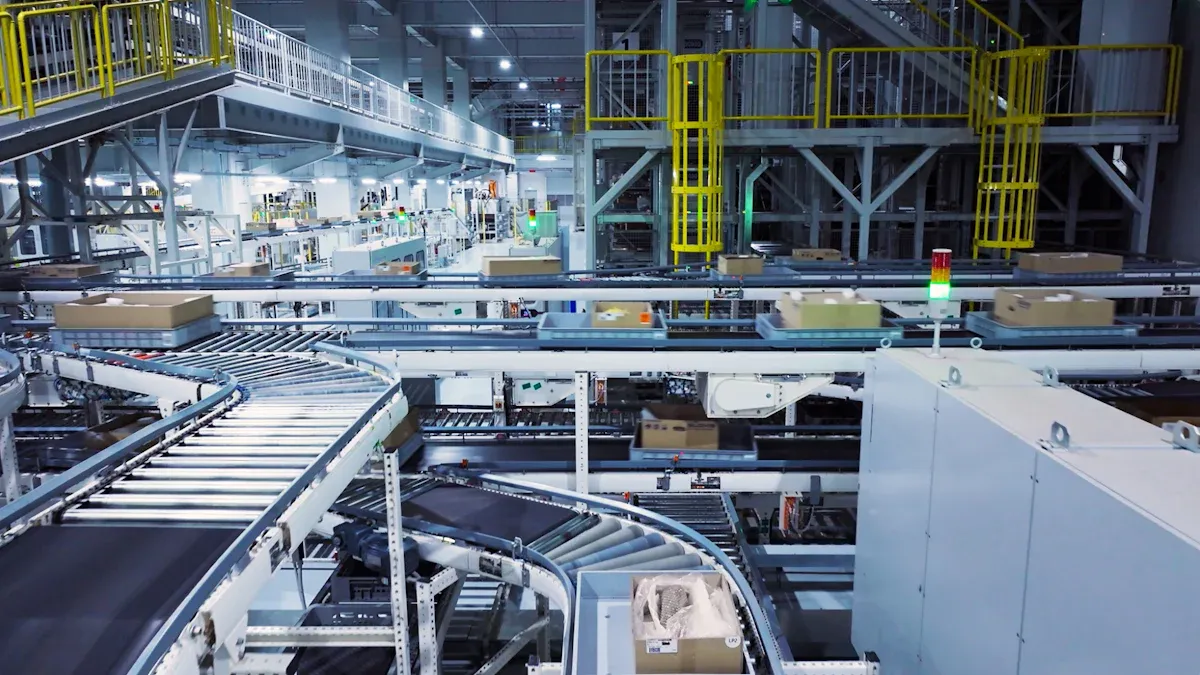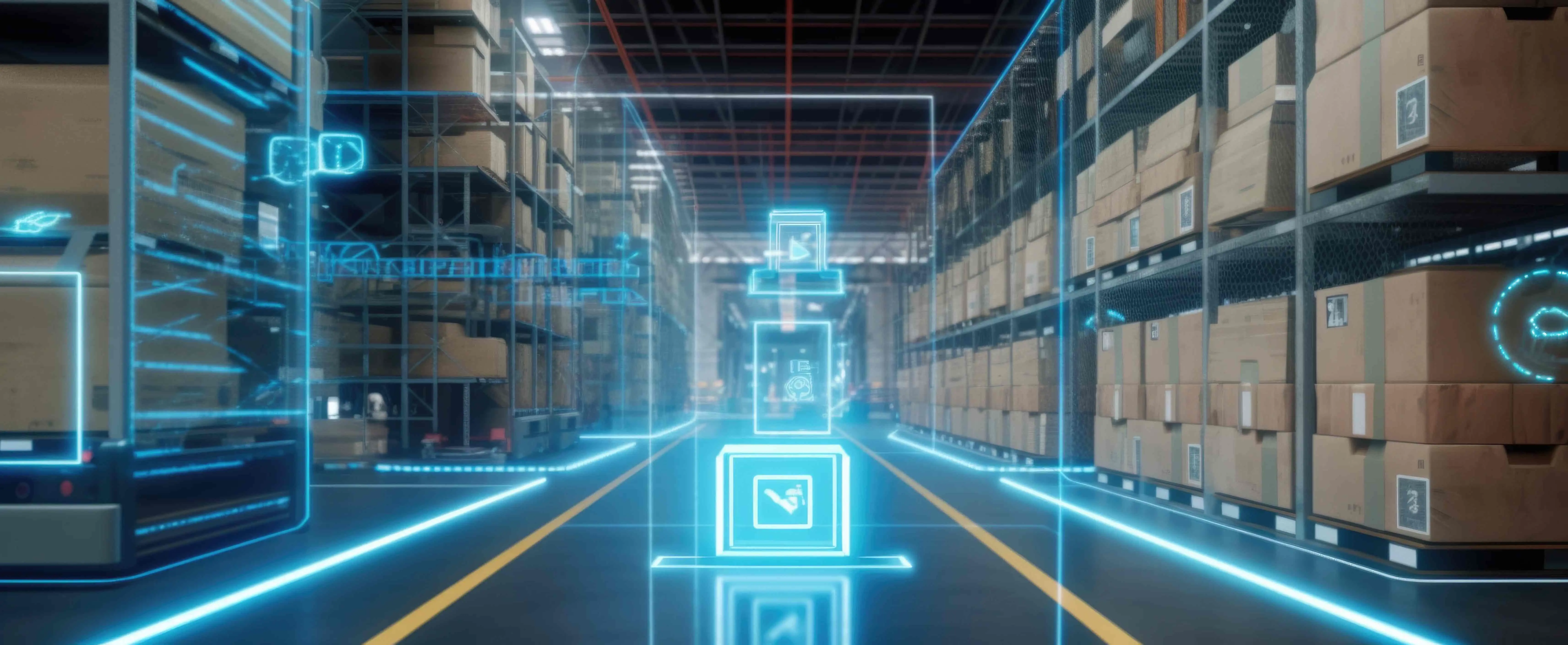When AI Meets Logistics: Case Studies in Demand Forecasting & Risk Mitigation

Artificial intelligence is revolutionizing logistics by addressing long-standing challenges in supply chain management. Businesses adopting AI-driven solutions have reported remarkable improvements, including a 15% reduction in costs and a 65% increase in service levels. Demand forecasting and risk mitigation, two critical aspects of supply chains, benefit significantly from AI. Accurate forecasting can reduce errors by up to 50%, while risk management powered by AI enhances operational resilience. JUSDA and its JusLink platform exemplify how AI meets logistics, offering innovative tools that optimize efficiency and minimize disruptions in global supply chains.
Key Takeaways
AI makes demand predictions better, cutting mistakes by half.
Real-time data helps companies adjust fast to market changes.
AI finds problems early, so businesses can act quickly.
JusLink's AI tools share data and improve teamwork in supply chains.
Using AI in logistics saves 15% on costs and boosts service by 65%.
Traditional Challenges in Logistics
Inefficiencies in Demand Forecasting
Demand forecasting has traditionally relied on historical data and manual processes, which often fail to capture the dynamic nature of modern markets. This approach struggles to account for sudden changes, such as unexpected spikes in demand or disruptions caused by black swan events. Metrics like order fill rate and on-time delivery percentage highlight inefficiencies in these systems.
Demand forecasting accuracy directly impacts inventory management.
Order cycle time reflects the speed and efficiency of logistics operations.
High return rates often indicate mismatches between predicted and actual demand.
These inefficiencies lead to overstocking or stockouts, both of which negatively affect customer satisfaction and operational costs. Real-time tracking of performance metrics can help identify these issues, but traditional systems lack the agility to adapt quickly.
Risk Management Limitations
Supply chains face significant risks, ranging from natural disasters to geopolitical events. Traditional risk management systems often lack real-time visibility, making it difficult to predict and mitigate disruptions effectively.
A recent study revealed the following statistics:
Statistic | Description |
|---|---|
63% | Companies that do not use any technology to monitor supply chain performance. |
81% | Supply chain professionals who believe analytics will be important in reducing costs. |
79% | Companies with high-performing supply chains that achieve greater revenue growth than the industry average. |
73% | Supply chains that experienced pressure to improve and expand delivery capabilities. |
15% lower | Supply chain costs for businesses with optimal supply chains compared to others. |
These figures underscore the importance of adopting advanced technologies to enhance visibility and resilience. Without real-time insights, businesses struggle to respond swiftly to disruptions, leading to operational downtime and financial losses.
Data and System Challenges
Fragmented data across multiple systems remains a major obstacle in logistics. Organizations often use single-purpose data management tools, creating silos that hinder visibility and collaboration.
Data fragmentation complicates coordination across supply chains.
Multiple copies of data throughout organizations reduce efficiency and increase errors.
Historical systems were designed for integrated environments, which contrasts with today's fragmented landscape.
This lack of integration makes it difficult to build cohesive supply chains. Despite advancements in cloud computing and AI, many systems still operate independently, limiting their ability to share data effectively. Resistance to data sharing among supply chain participants further exacerbates the problem, as conflicting interests prevent the creation of unified solutions.
AI Meets Logistics: Addressing Core Challenges
AI in Demand Forecasting
Predictive analytics for accurate demand predictions
AI-powered predictive analytics has transformed demand forecasting by addressing the limitations of traditional methods. Machine learning algorithms analyze vast amounts of historical and real-time data to uncover patterns and trends that manual processes often miss. This capability enables businesses to forecast future demand with remarkable accuracy.
A global eyewear company reduced its Weighted Mean Absolute Percent Error (WMAPE) by 10% and improved new product launch forecasts by 30% using AI-driven demand clustering.
An electronics wholesaler achieved an 85% accuracy rate in predicting product performance, leading to a 15% improvement in five-month forecast accuracy.
These advancements allow companies to optimize production schedules and inventory management, reducing the risks of overstocking or stockouts.
Real-time data processing to adapt to market changes
AI processes real-time data from diverse sources, such as social media and point-of-sale systems, to provide actionable insights. This capability enables businesses to adapt quickly to market fluctuations. For example, companies can adjust production schedules or marketing strategies based on real-time demand signals.
AI-driven solutions also enhance inventory management by preventing stock issues. By analyzing real-time data, businesses can make rapid adjustments, ensuring a seamless supply chain operation.
AI in Risk Mitigation
Identifying potential risks through machine learning models
Machine learning models continuously monitor supply chain data to identify potential risks. These tools analyze supplier performance, financial stability, and operational metrics to flag vulnerabilities before they escalate.
AI tools score suppliers based on risk profiles, providing recommendations for diversifying suppliers or renegotiating terms when risk scores deteriorate.
Automation of customer signal monitoring improves short-term sales forecasts and identifies risky orders, enhancing operational resilience.
Enhancing supply chain visibility with real-time insights
AI-powered control towers integrate data from various sources, offering real-time visibility into critical metrics like inventory levels and shipment statuses. This integration enables quick decision-making and minimizes disruptions.
AI-Driven Strategy | Description |
|---|---|
Ensure supply chain agility and flexibility | AI solutions build risk-aware strategies, enhancing resilience. |
Close loop orders to decrease delivery time | Proper implementation reduces delivery times significantly. |
Implement risk-based business continuity planning | AI optimizes planning to absorb and respond to customer orders effectively. |
These capabilities ensure supply chains remain agile and flexible, even during disruptions.
JusLink’s Role in Overcoming Data and System Barriers
AI-powered data integration and cleansing
JusLink addresses fragmented data challenges by leveraging AI for data integration and cleansing. Its platform consolidates data from disparate systems, ensuring consistency and accuracy. This approach eliminates silos and enhances collaboration across supply chain participants.

JUSDA Solutions
To provide you with professional solutions and quotations.
Encouraging collaboration through secure data-sharing platforms
JusLink promotes secure data sharing through its advanced platforms, fostering collaboration among stakeholders. By breaking down barriers, JusLink enables seamless data flow, which is critical for effective supply chain management.
AI Meets Logistics through JusLink’s innovative solutions, which combine data integration, real-time insights, and predictive analytics to create a resilient and efficient supply chain ecosystem.
Case Studies Demonstrating AI in Action

BMW: Optimizing Demand Forecasting
How AI improved production planning and inventory management
BMW has embraced predictive demand analytics to refine its forecasting processes. By utilizing machine learning models, the company analyzes historical sales data and market trends to predict demand with greater accuracy. This approach enables BMW to optimize inventory levels, reducing the risks of overstocking and stockouts. The integration of NVIDIA Omniverse for real-time data capture further enhances production planning by streamlining robot training and control updates. These advancements ensure that BMW maintains a balance between supply and demand, improving operational efficiency.
Results: Reduced waste and improved customer satisfaction
The adoption of AI-driven solutions has significantly reduced waste in BMW’s supply chain. Optimized inventory management minimizes excess stock, while accurate demand predictions prevent shortages. These improvements not only lower operational costs but also enhance customer satisfaction by ensuring timely delivery of products.
Poloplast: Enhancing Risk Mitigation
AI-driven risk assessment for supply chain disruptions
Poloplast has leveraged AI to strengthen its risk mitigation strategies. Machine learning models analyze potential disruptions, such as supplier delays or natural disasters, and provide early warnings. This proactive approach allows the company to address risks before they escalate. By centralizing data, Poloplast has improved forecasting collaboration, ensuring that all stakeholders have access to accurate and timely information.
Results: Faster response times and minimized operational downtime
AI has extended Poloplast’s demand prediction window from one month to 18 months, enabling better long-term planning. The company has also achieved significant time savings in demand planning, allowing teams to focus on strategic tasks. These advancements have minimized operational downtime, ensuring a more resilient supply chain.
Benchmark | Result |
|---|---|
Increased demand prediction window | From 1 month to 18 months |
Time saved on demand planning | Significant time savings |
Improved forecasting collaboration | Centralized data for accuracy |
JUSDA’s JusLink: Elevating Supply Chain Resilience
AI applications in predictive maintenance and logistics planning
JusLink, JUSDA’s intelligent supply chain platform, exemplifies how AI meets logistics by enhancing supply chain resilience. The platform uses AI-driven predictive maintenance to identify potential equipment failures before they occur. This capability reduces downtime and ensures smooth operations. Additionally, JusLink’s logistics planning tools optimize transportation routes and schedules, improving overall efficiency.
Results: Increased efficiency and cost savings
JusLink’s AI-powered solutions have delivered measurable results. Predictive maintenance has reduced unplanned downtime, while optimized logistics planning has cut transportation costs. These improvements translate into a more efficient and cost-effective supply chain, helping businesses maintain a competitive edge.
“JusLink’s advantage lies in its ability to integrate AI technology with deep industry knowledge, providing tailored solutions that exceed customer expectations.” – Wan Cheng, Product Ecosystem Director at JusLink
Key Benefits of AI in Demand Forecasting and Risk Mitigation

Improved Accuracy and Efficiency
Enhanced decision-making with data-driven insights
AI empowers businesses to make informed decisions by processing vast datasets quickly and accurately. Walmart, for instance, has integrated AI into its logistics operations, achieving significant efficiency gains. Their AI systems predict product demand, optimize supply chain workflows, and enhance delivery precision. These advancements have not only reduced costs but also improved customer satisfaction.
AI also enables companies to analyze historical sales data, market trends, and even social media sentiment. This capability leads to better planning and inventory management, ensuring that businesses meet customer demands effectively. With real-time insights, logistics managers can respond swiftly to changes, enhancing overall supply chain efficiency.
Reduced errors in demand predictions and risk assessments
AI continuously learns from new data, identifying patterns and adjusting predictions in real time. This reduces the likelihood of overstocking or stockouts, which are common in traditional forecasting methods. By analyzing data from multiple sources, AI minimizes errors in both demand predictions and risk assessments. Businesses can scale operations without compromising accuracy, ensuring seamless supply chain performance.
Greater Supply Chain Resilience
Proactive identification and mitigation of risks
AI-driven analytics forecast potential disruptions by analyzing historical and real-time data. This proactive approach allows businesses to identify risks, such as supply chain disruptions, before they escalate. Automated decision-making optimizes responses, reducing delays and enhancing operational efficiency.
AI also monitors suppliers continuously, assessing risks and recommending preventive actions. This capability enhances agility, enabling businesses to adapt quickly to market changes and disruptions. Real-time visibility ensures swift reactions, improving overall resilience.
Faster recovery from disruptions
AI-powered tools provide early warnings of potential threats, allowing companies to prepare and recover faster. For example, real-time visibility into shipment statuses helps businesses reroute deliveries during disruptions. Automated systems optimize recovery strategies, ensuring minimal downtime and maintaining customer trust.
Competitive Advantage with JusLink
Staying ahead of competitors with AI-driven innovations
JusLink exemplifies how AI meets logistics by integrating advanced technologies into supply chain management. Its AI-powered tools, such as predictive maintenance and intelligent risk management, provide businesses with a competitive edge. These innovations enable companies to optimize operations, reduce costs, and deliver superior service.
Building stronger relationships with customers and partners
JusLink fosters collaboration through secure data-sharing platforms, breaking down barriers between supply chain participants. By providing real-time insights and predictive analytics, JusLink helps businesses build trust with customers and partners. This collaborative approach strengthens relationships and ensures long-term success in a competitive market.
AI-driven solutions like JusLink are transforming supply chains into resilient, efficient ecosystems. Businesses leveraging these technologies gain a significant advantage, ensuring they remain competitive in an ever-changing landscape.
AI is revolutionizing logistics by solving traditional challenges in demand forecasting and risk mitigation. Businesses adopting AI-driven solutions experience significant benefits: a 15% reduction in costs, a 35% increase in operational effectiveness, and a 65% improvement in service levels. JUSDA and its JusLink platform demonstrate how AI Meets Logistics by enhancing efficiency, resilience, and competitiveness. Companies must embrace AI to build robust supply chains and thrive in a rapidly evolving market.
FAQ
What is the role of AI in demand forecasting?
AI analyzes historical and real-time data to predict future demand accurately. It identifies patterns and trends that manual methods often miss. This capability helps businesses optimize inventory, reduce waste, and meet customer needs effectively.
How does AI improve risk mitigation in supply chains?
AI-powered tools monitor supply chain data continuously to identify potential risks. Machine learning models analyze supplier performance, shipment statuses, and external factors. These insights enable businesses to address vulnerabilities proactively, minimizing disruptions and ensuring operational resilience.
What makes JusLink unique in supply chain management?
JusLink integrates AI with deep industry knowledge to offer tailored solutions. Its features include predictive maintenance, intelligent risk management, and real-time data integration. These tools enhance efficiency, reduce costs, and foster collaboration among supply chain participants.
How does AI enhance supply chain visibility?
AI-powered platforms consolidate data from various sources, providing real-time insights into inventory levels, shipment statuses, and supplier performance. This visibility allows businesses to make informed decisions quickly, ensuring smooth operations and minimizing delays.
Why should businesses adopt AI-driven logistics solutions?
AI-driven solutions improve accuracy, efficiency, and resilience in supply chains. They reduce costs, enhance customer satisfaction, and provide a competitive edge. Businesses leveraging AI can adapt to market changes swiftly, ensuring long-term success in a dynamic environment.
See Also
Understanding Current Trends in Logistics Risk Management
Exploring AI's Hidden Capabilities in Logistics Operations
Essential Strategies for Effective Supply Chain Risk Management
Transforming Future Logistics Through AI in Supply Chains
Enhancing Automotive Demand Forecasting With Data-Driven Insights
